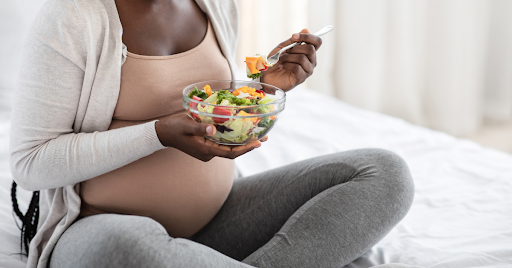Pregnancy and motherhood are filled with an abundance of emotions, both positive and negative. Postpartum depression (PPD) is a serious medical illness accompanied by distressing symptoms that can make it increasingly challenging to care for your newborn baby. Although PPD can make you feel alone, you are not— in fact, 1 in 9 women in the United States develop PPD.
Coping With Postpartum Depression
Many women go through the “baby blues” after giving birth, which is characterized by a sad and empty feeling. Usually, these symptoms tend to clear within 3 to 5 days. When a woman has persistent feelings of sadness, hopelessness, or emptiness for more than two weeks post birth, this often is a sign of postpartum depression. Raleigh OBGYN understands the emotional toll this mental illness can take on your overall health. That’s why we have compiled five tips for coping with postpartum depression.
-
Make Time For Mindfulness
This one can be difficult with a newborn but is of great importance when dealing with postpartum depression. Some ways you can practice mindfulness throughout your day include:
- Giving attention to your breathing, mood, and feelings
- Identifying triggers that make you feel angry, sad, or anxious
- Slowing down and taking one day at a time
- Being kind to yourself and freeing yourself from negative thoughts
Although these tips can be easier said than done, trying to engage in at least one every day can ultimately add up and help with your symptoms of postpartum depression. Even for mothers who aren’t struggling postpartum, mindfulness can help center you back to your core and burden the stressors of parenting.
-
Set Realistic Expectations For Yourself
Before having a baby, you may have had an idea in your head about what it was going to look like. However, reality doesn’t always match with the version we have in our minds. Not only are you recovering from giving birth, but you also may have to be a mother, wife, friend, and employee, too. Recognize your limits, and prioritize you and your baby’s well-being above all else. And remember, there is no such thing as a “perfect” mom.
-
Make Healthy Lifestyle Choices
Although making healthy lifestyle choices most likely isn’t going to get rid of your symptoms altogether, it can help combat external stressors and boost your mood. Some great, low-impact, low-intensity exercises you can incorporate into your routine include:
- Belly breathing
- Pelvic tilt exercises
- Kegel exercises
- Happy baby pose
- Light yoga
- Brisk walking
On top of light exercise, try to ensure you are eating a healthy diet and engaging in mindful exercises such as meditation.
-
Don’t Be Afraid To Ask For Help
Postpartum depression can leave you feeling culpable and bring on feelings of insurmountable guilt. But remember, you are not going through this alone. Plenty of women have gotten through to the other side. Don’t mistake asking for help as being weak— in fact, it’s quite the opposite! Seeking help is the most courageous thing you could ever do for yourself and your baby. If you are struggling to find help, check out this resource from Postpartum Support International.
-
Consider Treatment Options
Once you’ve taken the step to ask for help, it is time to explore your treatment options. Luckily, there are plenty to choose from that are sure to help each woman in her own specific journey. Postpartum depression treatment can include psychotherapy, antidepressants, hormone therapy, or in severe cases, electroconvulsive therapy. Listed below are other helpful resources for managing postpartum depression:
- Postpartum Support International (PSI) helpline: 1-800-944-4PPD(4773)
- Postpartum Progress: A list of PPD support groups and resources by state
- Locating mental health treatment facilities and programs in your state.
- National Institute of Mental Health: The latest research, news, and statistics on postpartum depression.
- 1-800-PPD-MOMS(773-6667): This is the National Perinatal Hotline
Postpartum depression can make you feel lonely and guilty. But remember, you are not alone, and PPD is treatable! Raleigh OB/GYN Centre, we offer a full range of obstetrical care from preconception to delivery. We have provided state-of-the-art care for mothers, daughters, and now granddaughters since 1974. If you have questions or want to learn more about postpartum depression, visit our website to schedule an appointment with our team of dedicated providers or call us at 919-875-8225.











